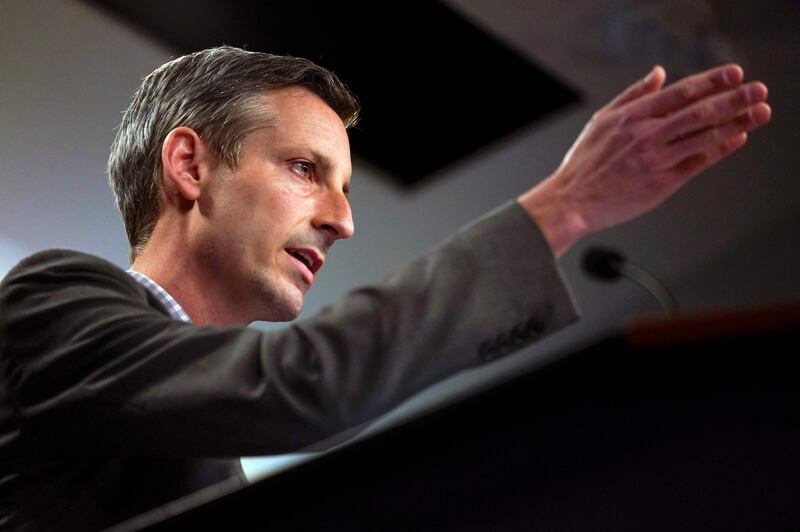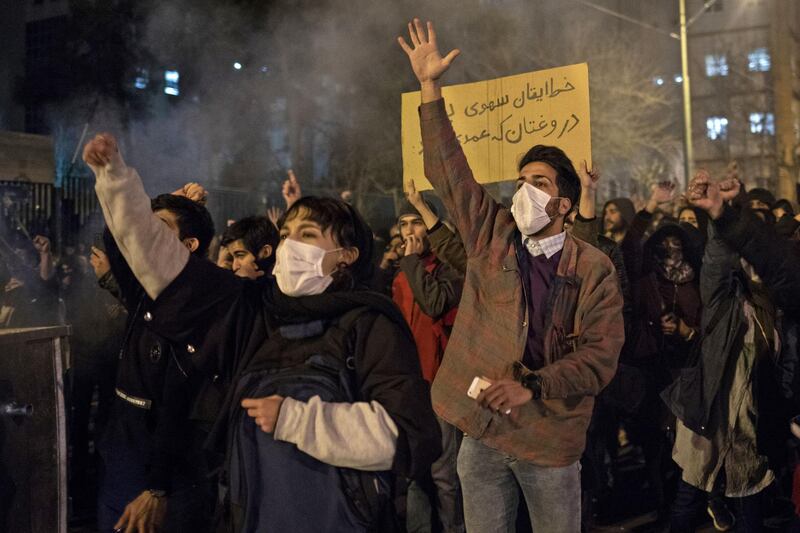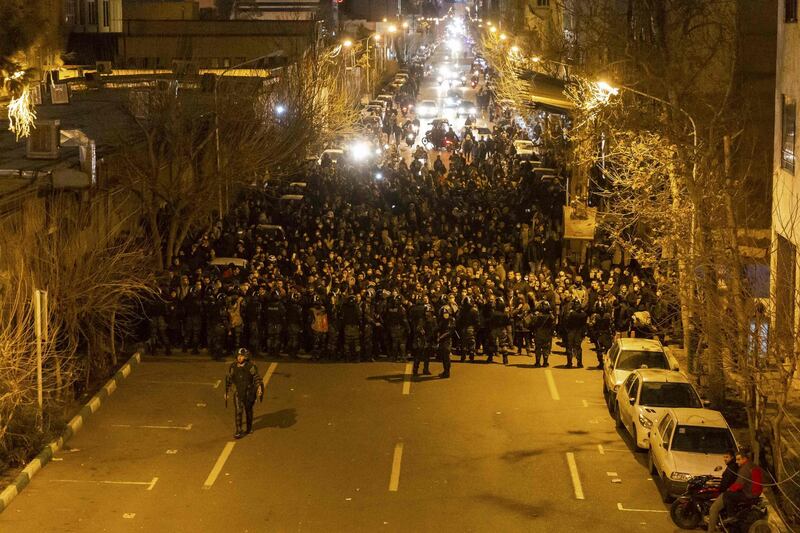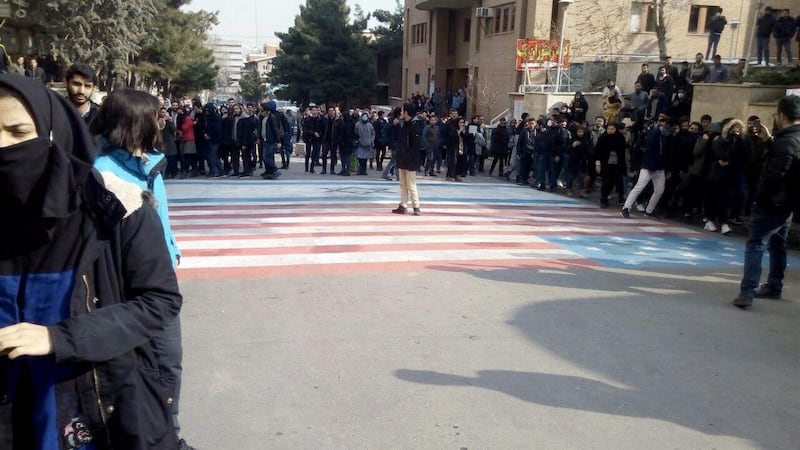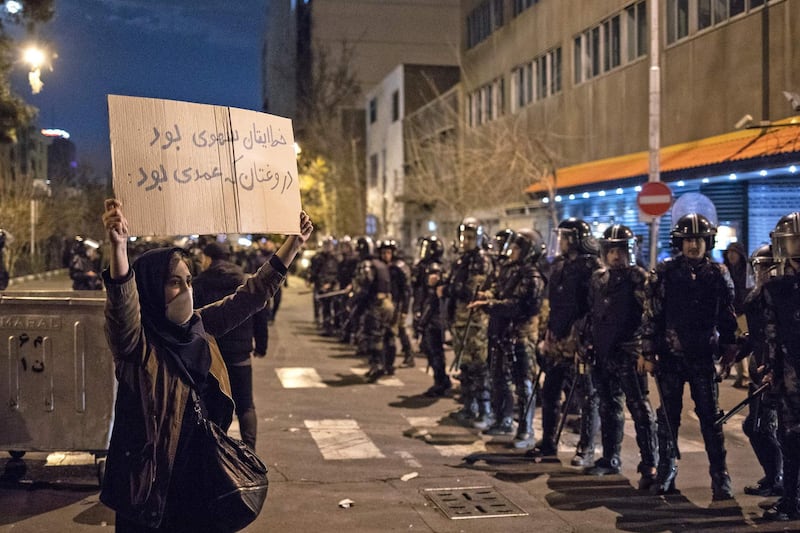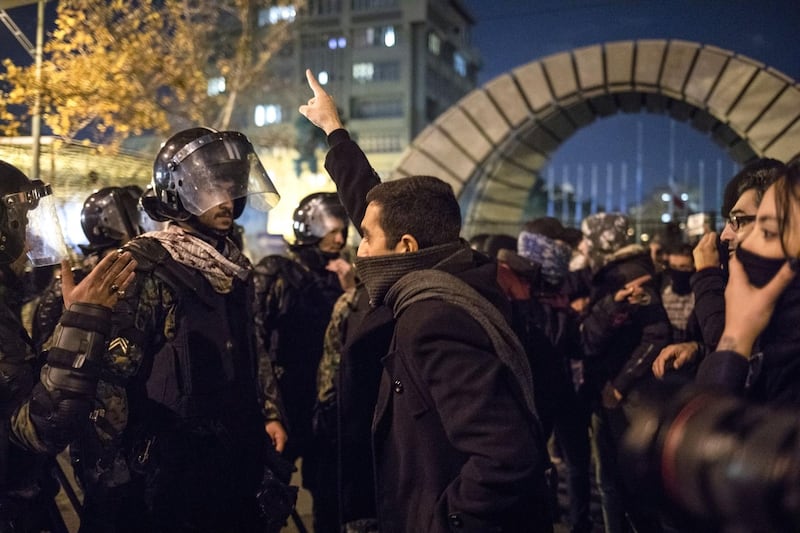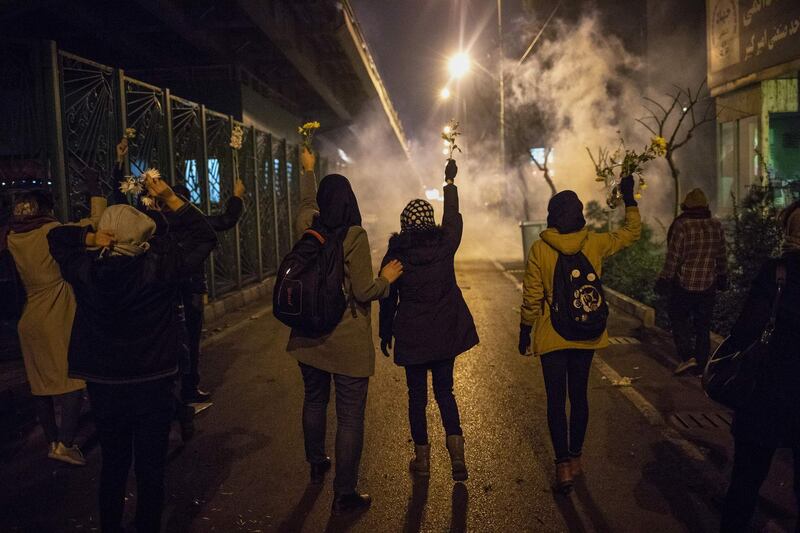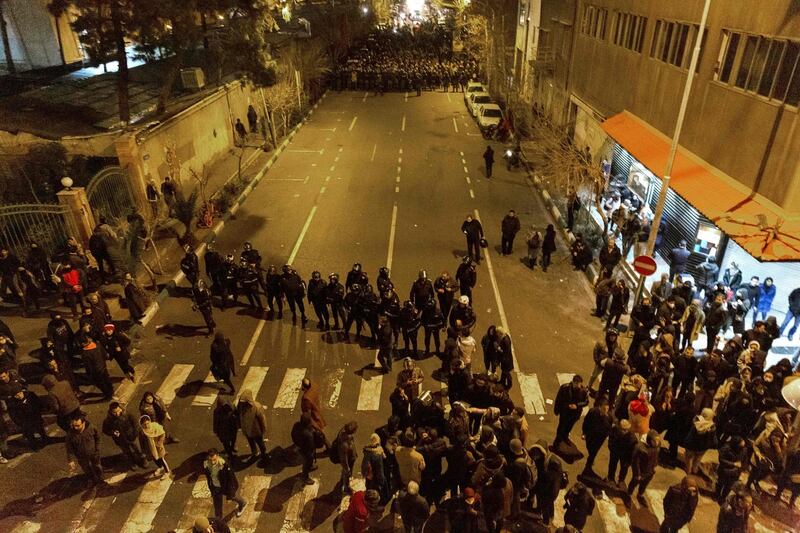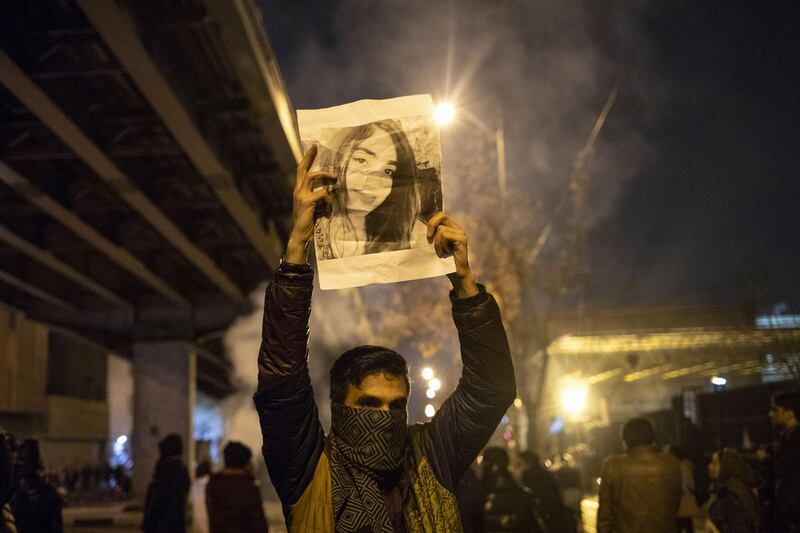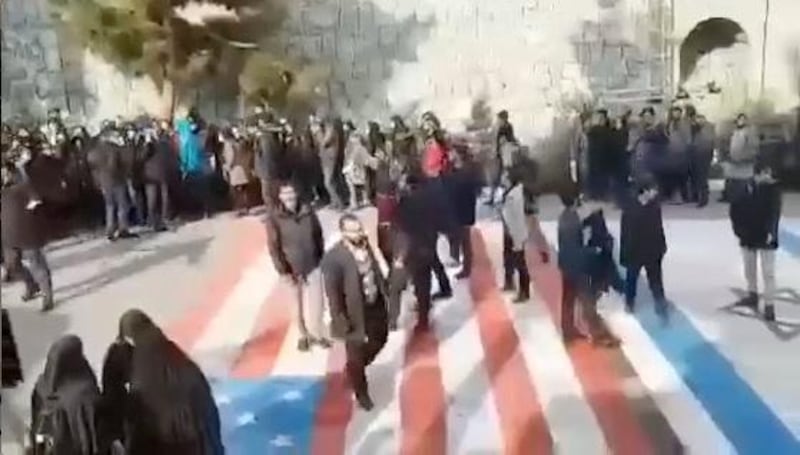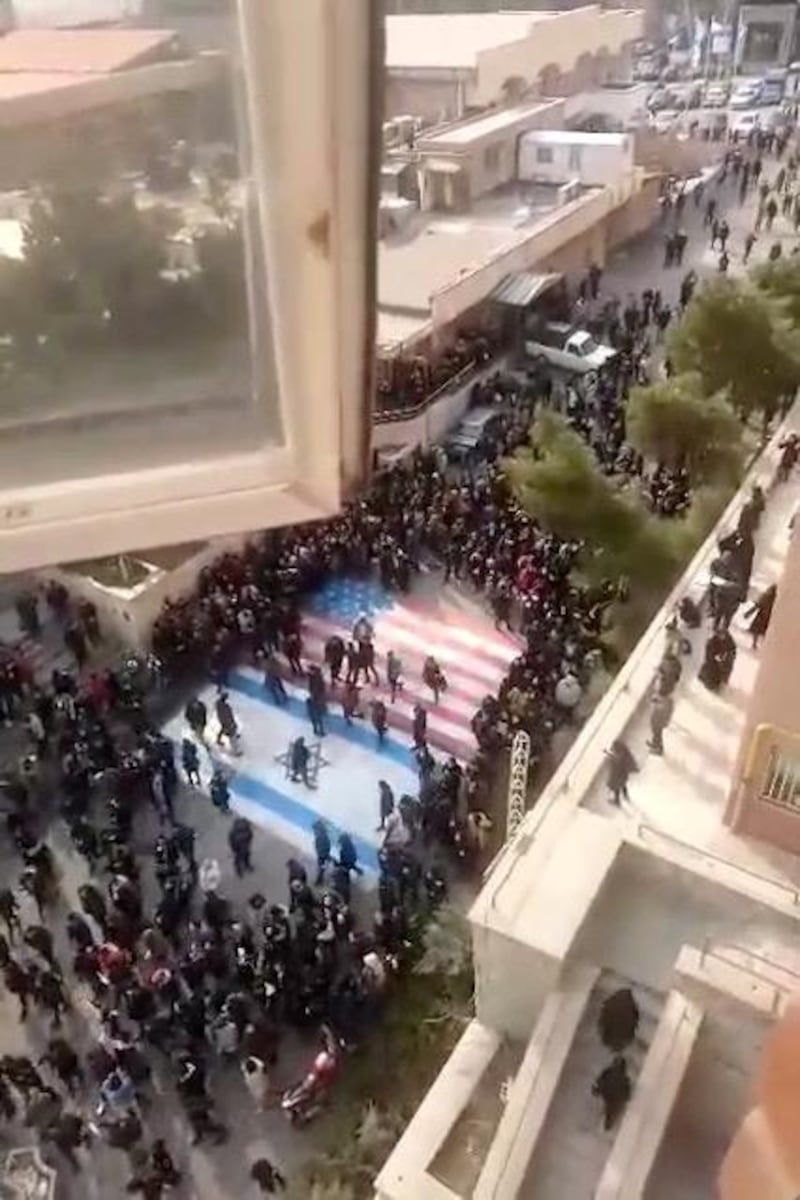The US on Wednesday voiced its support for the mass protests that have swept through Iran over the past several days.
The announcement came shortly after Iran's supreme leader Ayatollah Ali Khamenei condemned Washington over the impasse that has been reached in negotiations to restore the nuclear deal.
“The Iranian people have a right to voice their frustrations and hold their government accountable, but we have seen disturbing reports that security forces fired on protesters, resulting in multiple deaths,” State Department spokesman Ned Price said in a statement.
“We condemn the use of violence against peaceful protesters. We support the rights of Iranians to peacefully assemble and express themselves without fear of violence and detention by security forces.”
Mr Price also noted that the US is monitoring reports of internet slowdowns in the Khuzestan region, where the protests began, and called on Tehran to “allow its citizens to exercise their right to freedom of expression and to freely access information".
The protests, which first began on July 15 over water shortages, spread throughout Iran’s major cities this week.
However, the US did not issue a formal statement condemning the mass demonstrations until today — mere hours after Mr Khamenei took several swipes at American sanctions on Iran amid stalled negotiations in Vienna to restore the nuclear deal.
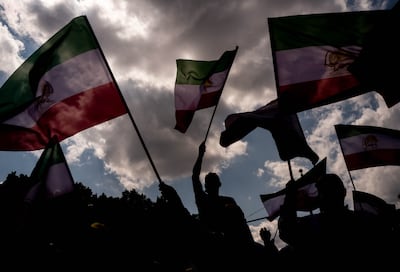
“The State Department is very quick to condemn human rights abuses in other places and it clearly was dragging its feet a little bit on Iran,” Barbara Slavin, director of the Future of Iran Initiative at the Atlantic Council, told The National.
“Nothing with Iran happens in a vacuum. And so, if you look at the nuclear talks, you’re aware of what’s going on in Iran internally, you’re aware of the plot to kidnap a dissident journalist in Brooklyn. It all comes into the mix. And so, I think the Biden administration is trying to deal with all of these issues and still keeps its eyes on the prize, which is a return to the [nuclear deal].”
Ms Slavin did caution that verifying video footage of the violent crackdown on the protests may have contributed to the State Department’s relative delay in issuing a formal condemnation.
Hours before Mr Price’s statement, Mr Khamenei tweeted: “In the recent nuclear talks, the Americans staunchly insisted on their obstinate stance.”
He also called the US “stubborn” during remarks on Iranian TV and told outgoing President Hassan Rouhani that his government has illustrated “that trust in the West does not work".
Iran has said it will not return to the negotiating table until the hard-line president-elect Ebrahim Raisi takes office.
The two sides have broadly agreed that the US will relieve sweeping sectoral sanctions and that Iran will scale back its nuclear activities to revive the nuclear deal. But Tehran has also insisted that President Joe Biden lift the additional sanctions that former president Donald Trump imposed after withdrawing from the accord in 2018.
The Iranian government has also claimed that it has arrested a cell of agents from Israel’s Mossad intelligence agency, alleging that the detained people had planned to provoke violence and assassinate Iranian officials during the protests.
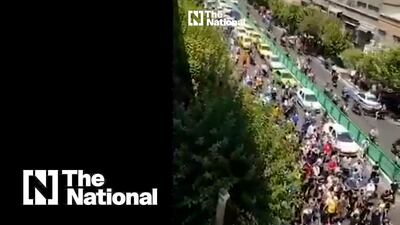
Iranian security forces have fired live bullets on protesters after demonstrations began over water shortages in Khuzestan province, where temperatures have soared as high as 50°C. Although the region is home to several major rivers and two wetlands, development and oil exploration projects have destroyed much of its water resources.
This week, demonstrations spread to major cities such as Tehran, Karaj and Tabriz. Video footage shows some protesters shouting “death to the dictator” — a slogan directly aimed at Mr Khamanei.
“The Iranian people are now putting a spotlight not only on their unmet needs but also their unfulfilled aspirations for respect for human rights — rights to which individuals the world over are entitled,” said Mr Price.
The demonstrations are the largest to sweep the country since 2019, when the skyrocketing cost of consumer goods prompted protesters to call for the overthrow of the government, issuing direct criticism of Mr Khamenei. The Iranian government killed hundreds of protesters over the course of several months.
The Trump administration highlighted the demonstrations and frequently voiced support for the protesters as it justified its maximum pressure campaign, which relied on placing economic sanctions on Iran following the former president’s withdrawal from the nuclear deal.
Former president Barack Obama faced heavy criticism for his administration’s reluctance to initially condemn Iran’s response to protests in 2009 over election irregularities that allowed the hard-line former president Mahmoud Ahmadinejad to remain in power.
Mr Obama ultimately issued a forceful condemnation of the crackdown from the White House 10 days after the demonstrations began as Iranian authorities became increasingly brutal in their response to the protesters.
